Step It Up
Sometimes simple is better. Take the Step-Up. A great, simple exercise. It’s indispensable when training beginners as well as advanced athletes. A low, unweighted, assisted Step-Up is an ideal exercise to return injured or de-conditioned athletes to functionality. A high, weighted Step-Up is challenging for even the most gifted athlete.
Step-Ups are as functional as any other exercise in our lexicon and are infinitely scalable to all levels. To use a Robb Wolf-ism, Step-Ups are loaded with AKP (“Ass Kicking Potential!”).
The higher the step, the more flexibility is required in the hip joint. Gradual increases in step height will produce both stronger and more flexible hips. Loading the legs unilaterally will help identify and address muscle imbalances. Unilateral loading also creates a greater demand on the athlete’s balance and coordination than in a squat. Variations in isolateral and contralateral loading, i.e. loading the same side as the working leg or the opposite side of the working leg, puts a greater demand on the athlete’s midline stability.
The action of the legs is concentric and then eccentric. There are two basic stepping patterns: repeating (LRRL, LRRL) and alternating (LRLR, LRLR). The repeating pattern allows for the same leg to be used concentrically and then eccentrically. This is the preferred method for Step-Ups in my opinion for that reason. The alternating step is probably better for faster, unweighted Step-Ups or stair climbing drills.
Things to Remember
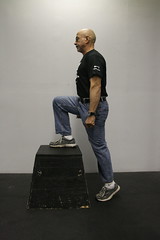
#1. Stay upright.
The shoulders, hips and back leg should form a straight line with no break at the hip. However there will be a slight inclination forward to put weight on the front foot.
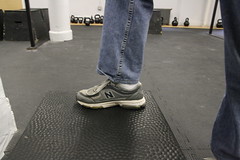
#2. Keep the front heel down.
Keep the front heel down. Driving off of the front heel will allow for the hamstrings and glutes to do their share of the work.
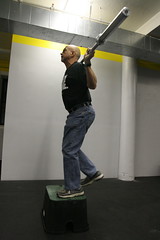
#3. Come all the way up to full extension on the working leg and lower down with control.
Note that an inability to come to full extension on one leg should be examined carefully to see if the load and box are the right height. If the athlete is unable to fully extend on the one leg it might be evidence of a faulty movement pattern or injury that needs addressing.
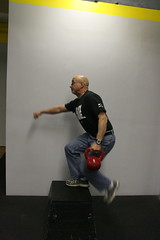
#4. Use consistent foot work.
Try to use the same leg both concentrically and eccentrically for each rep.
Things to Avoid
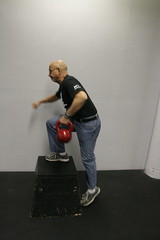
#1. Do not bend over or round your back.
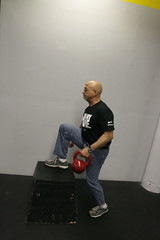
#2. Do not push or jump off the back leg.
Make the front leg do all the work.
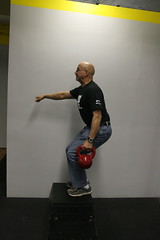
#3. Do not try to sneak the back leg up to help you finish the extension.
The athlete sneaking the back leg is an obvious sign that the athlete is not finishing their leg and hip extension on the working leg. This must be rectified before increasing the load or the height of the box.

#4. Do not go too high or too heavy too soon.
Some Variations
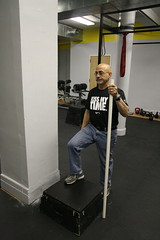
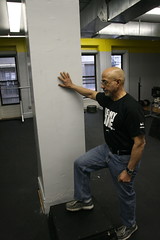
#1. Beginner.
Use a short box and a wall or a PVC pipe for balance. Make sure your athletes are completely competent at doing this before progressing them further.

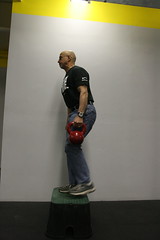
#2. Farmer Style.
Hold a weight in one or both hands in the hang position.
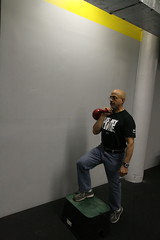
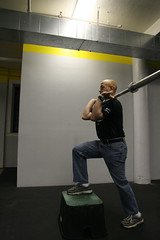
#3. Rack position.
Hold a weight in the front squat rack.

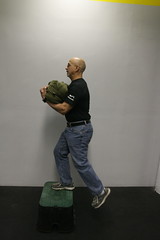
#4. Zercher style.
Hold a weight in the crook of the elbows. This is a great variation when using sandbags.
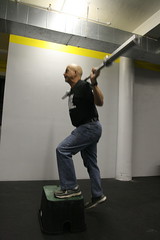

#5. Back rack position.
Hold a weight in the high bar back squat position.
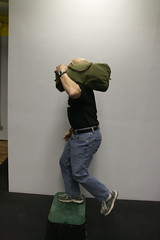
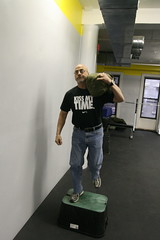
#6. On the shoulder.
This is great for sandbags. It’s not the front or the back position but the weight sits comfortably on either shoulder.

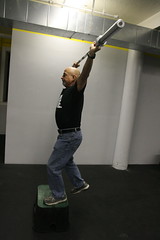
#7. Overhead.
Hold the load overhead with the arms extended and the shoulders active.
Step-Ups are a great exercise on their own and also an excellent substitute for box jumps, lunges and even pistols. Try to work them into your program once in a while to challenge your athletes.
Thanks to Jacinto for modeling.
Have anything to say about Step-Ups? Please leave a comment.

fall arrast training Providers in the UK…
[…]Step It Up | CrossFit Virtuosity | New York City[…]…